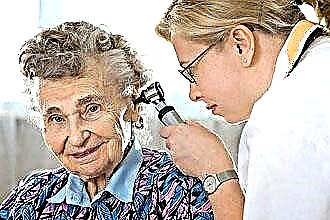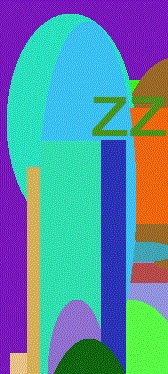Obstruction of the nasal passages is a pathological symptom indicating swelling of the mucous membranes and the accumulation of liquid secretions in the nasal cavity. Due to the violation of nasal breathing, the child refuses breastfeeding, is capricious, constantly cries and does not sleep well. What to do if a newborn has a stuffy nose? Infectious inflammation in the nasal cavity is eliminated with antiseptic and isotonic solutions, and allergic rhinitis - with antihistamines nasal agents.
It is possible to use medicines for the treatment of infants only as directed by a doctor. It is possible to draw up a therapy regimen only after determining the cause of the violation of nasal breathing. The article will consider the safest and most effective methods of restoring the normal patency of the nasal passages in infants.
Cleaning the nasal passages
 What to do if the baby's nose is not breathing? Impaired nasal breathing is a common problem faced by newborns. In babies, the airways are quite narrow, so the slightest swelling of the tissues and the accumulation of mucus in the respiratory tract leads to a stuffy nose.
What to do if the baby's nose is not breathing? Impaired nasal breathing is a common problem faced by newborns. In babies, the airways are quite narrow, so the slightest swelling of the tissues and the accumulation of mucus in the respiratory tract leads to a stuffy nose.
Treatment of newborns involves regular physiotherapy procedures aimed at cleansing the nose of mucous secretions, allergens and dust. Irrigation of the nasal cavity with isotonic solutions helps to reduce swelling in tissues and strengthen local immunity. The more often mothers conduct therapeutic activities, the less often children will suffer from respiratory diseases.
Rinsing the nose
It is possible to eliminate a stuffy nose in a newborn with the help of washing. To reduce the viscosity of muconasal secretions (snot) in the nose, it is recommended that children be instilled with medications based on isotonic solutions. According to pediatricians, the most successful option is "Sodium Chloride" (saline). It does not irritate the mucous membranes, but at the same time helps to restore the normal secretory glands in the nasopharynx and strengthen the walls of blood vessels.
If a month-old baby has mucus in the nasopharynx, it is recommended to do the following:
- lay the child on his back with a small towel roll under his head;
- instill 2-3 drops of isotonic solution into one nasal passage;
- after 5 minutes, insert the tip of a compressed rubber syringe into the nostril and remove the accumulated mucus;
- flush the other nostril in the same way.
Important! Do not inject saline solutions into the nose with a syringe or rubber bulb under pressure.
If nasal breathing is disturbed in babies, solutions cannot be injected into the nasal cavity under pressure. Penetration of pathological secretions into the auditory tube and paranasal sinuses is fraught with the development of serious complications, which include eustachitis, frontal sinusitis, sinusitis, etc.
Suction of mucus
With infectious and allergic rhinitis, the amount of fluid in the nasal cavity can triple. The secretion formed in the nasopharynx not only interferes with normal breathing, but flows into the lower parts of the respiratory tract along the walls of the pharynx. Along the way, the liquid irritates the cough receptors in the mucous membranes, which is why the baby begins to cough.
To remove muconasal secretions from the airways, pediatricians recommend using special aspirators. If they are not available, you can use Diaghilev's electric breast pump or an ordinary rubber bulb with a soft tip. During the procedure, you must adhere to the following rules:
- instill 2-3 drops of a mucolytic agent into the newborn's nose;
- lay the baby on its side and insert the catheter into the nostril;
- by pressing the button of the aspirator, remove the mucus from the lower nostril;
- Turning the baby over on the other side, remove the viscous secretion from the second nostril.
Important! After each procedure, it is necessary to disinfect the catheter with an alcohol solution or an antiseptic.
If a child has a stuffy nose due to the development of a respiratory disease, therapeutic measures will have to be carried out at least 4-5 times a day. The penetration of pathological flora into the paranasal sinuses (sinuses) can provoke complications and, as a result, a deterioration in the well-being of the baby.
Removing dry crusts
At the stage of recovery in infants, dry crusts are often formed in the nasal passages. They interfere with normal nasal breathing and cause discomfort. To eliminate them, it is recommended to bury saline preparations into the nose, and then remove the softened crusts with cotton turundas. To make breathing easier for a newborn, do the following:
 drip 2-3 drops of Aqualor Baby or Physiomer into each nostril;
drip 2-3 drops of Aqualor Baby or Physiomer into each nostril;- twist small dense flagella from cotton wool, then moisten them in saline;
- insert cotton balls into the child's nose and gently scroll several times;
- remove the soaked crusts and put moisturizing nasal drops into the spout.
Before treating rhinitis in newborns, it is advisable to determine the nature of the inflammation in the nasopharynx. If the cause of the common cold is an infection, it will be possible to eliminate the pathological processes in the body with the help of drugs of etiotropic action. These include medicines that directly destroy the causative agent of the disease, i.e. antiviral drugs, antibiotics, and antifungal agents.
Safe nasal products
When a baby's nose does not breathe, in most cases this indicates swelling of the nasopharyngeal mucosa. To normalize the patency of the nasal passages, you need to use topical drugs. These include nasal drops and solutions that have decongestant, wound healing and antiseptic properties.
Vasoconstrictor drops
If the baby has a clogged nose, vasoconstrictor drugs will help to restore breathing. However, it should be borne in mind that for the treatment of the smallest patients, only safe drugs should be used that do not contain dyes, preservatives and toxic substances. In pediatric practice, the following vasoconstrictor drops are used to treat rhinitis:
- "Nazivin";
- "Nazol baby";
- Adrianol.
Abuse of vasoconstrictor drops leads to dehydration of the mucous membrane and the development of atrophic rhinitis.
Vasoconstrictor drugs (decongestants) reduce swelling in the tissues of the nasopharynx, thereby improving the patency of the nasal passages. The components included in the preparations inhibit the activity of the glands of external secretion, due to which less mucous secretions are formed in the respiratory tract. Despite the high effectiveness of decongestants, doctors do not recommend using them for more than 3-4 days in a row.
Sea salt solutions
Isotonic nasal drugs are the safest drugs that do not cause allergic reactions in children. The solutions contain sea salt, trace elements and vitamins, which accelerate biochemical reactions in the affected tissues. This, in turn, contributes to the speedy healing of mucous membranes and the elimination of swelling in the nasal passages.
For irrigation of the nasopharynx, the following types of drops based on isotonic solutions can be used:
- Otrivin Baby;
- "Marimer";
- Aqua Maris;
- Aqualor Baby.
Unlike vasoconstrictor and homeopathic remedies, sterile isotonic solutions do not lead to degeneration of the mucous membranes. Therefore, they can be used not only for the treatment of ENT diseases, but also for keeping the newborn's nasal cavity clean.
Homeopathic drops

In cases where the newborn cannot breathe through the nose, homeopathic nasal remedies are included in the treatment regimen. They have anti-inflammatory, immunostimulating and regenerating properties. The preparations do not contain toxic substances, so they can be used to prevent respiratory diseases and moisturize the nasal mucosa.
At the first manifestations of rhinorrhea (acute rhinitis), it is recommended to instill the drug "Euphorbium Compositum" into the nose. It increases local immunity and stimulates the synthesis of interferon in the body, which prevents viruses from penetrating deep into the tissues of the nasopharynx. You can use the medicine 2-3 times a day during the period of exacerbation of infectious rhinitis.
Conclusion
Disturbed nasal breathing in newborns is a common problem that can be associated with physiological, infectious or allergic causes. It is possible to restore the normal patency of the nasal passages only after clearing the airways from muconasal secretions. Viscous secretions are removed from the nose using an aspirator and thinning nasal preparations - "Physiomer", "Nazol Baby", "Morenazal", etc.
Vasoconstrictor, antiseptic and homeopathic nasal preparations help to reduce swelling in the respiratory tract and normalize the secretory function of the mucous membranes. Some of them can be used to prevent respiratory diseases, others - no more than 4-5 days in a row during periods of exacerbation of the disease. Only a pediatrician can draw up a treatment regimen and select the most suitable medications after examining the baby.

 drip 2-3 drops of Aqualor Baby or Physiomer into each nostril;
drip 2-3 drops of Aqualor Baby or Physiomer into each nostril;

